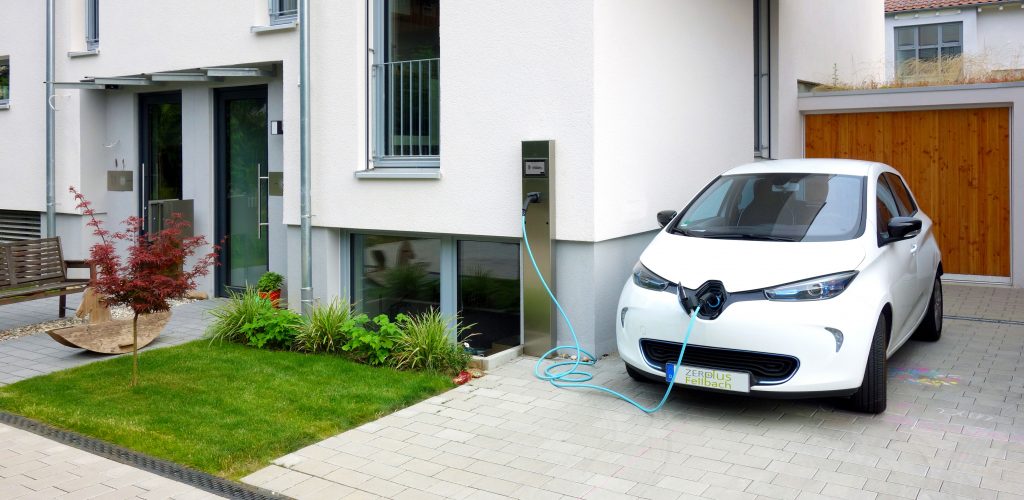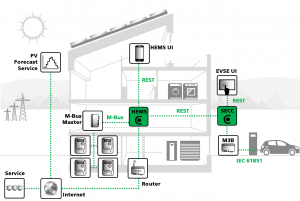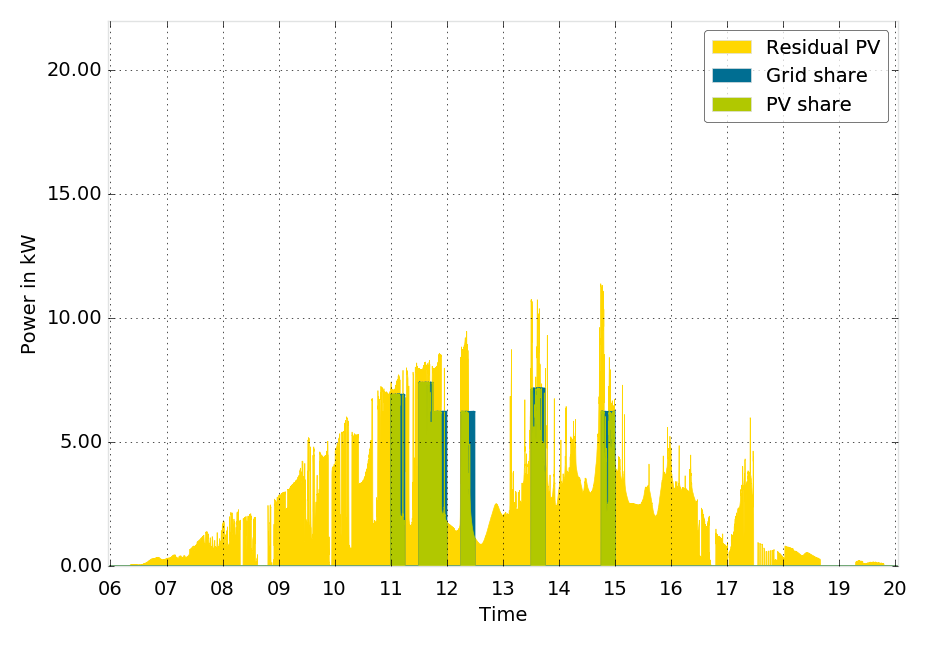Fellbach ZEROplus
PV self-consumption maximisation

Self-consumption of on-site generated PV energy has become a profitable business model for private households in Germany. In Fellbach ZEROplus we investigated on how battery electric vehicles (BEV) can increase the self-consumption. We developed a Home Energy Management System (HEMS) and an intelligent charging infrastructure, which is capable of computing forecast based charging schedules. The optimisation goal was hereby to maximise the share of PV energy charged by the BEV. The system was successfully tested in a two-year field test under realistic conditions. Our charge algorithm led to excellent results and self-consumption could be increased by controlled charging compared to uncontrolled charging.
OpenMUC Applications
The system consists of two OpenMUC devices for each household. One acts as HEMS and the other one as charging controller (SECC).HEMS Application
- Samples and logs four smart meters in a five seconds interval via M-Bus
- Fully configurable aggregator which additionally down samples the log data for further processing
- Uses OpenMUC’s REST web service to transmit live and historical data to the HEMS UI
- Project specific OpenMUC driver retrieves PV forecasts from an external service provider
- Module to compute household load forecast based on historical data
- Charging algorithm which computes charging schedules with maximal share of PV energy based on user input, residual PV and household load forecast
SECC Application
- Uses OpenMUC’s REST web service to receive charge parameter like desired state of charge (SoC) and desired departure time from the EVSE UI
- Charge sequence control which reacts on user input and vehicle events
- Project specific OpenMUC driver to translate charging schedules into IEC 61851-1


